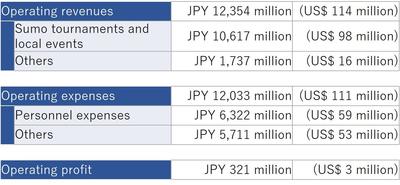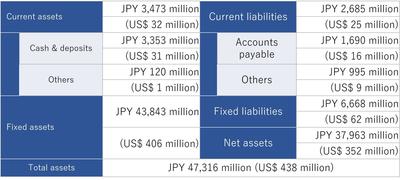Column Finance and the Social Security System 2020.05.26
【Aging, safety net and fiscal crisis in Japan】No.224: Can Sumo Overcome COVID-19?
According to the Japan Sumo Association, the Japanese national sport of sumo was described in the Kojiki, a history book that was first created in Japan in 712. In other words, it originated quite some time ago. As well as being the national sport, Sumo was a ceremony at an annual festival for harvesting crops. During the Sengoku period (between the end of the 15th century until the 16th century), it also became one of the training methods for samurais, as warriors repeatedly fought to unify the nation throughout this period. It was later, during the Edo period (1603-1868), that Sumo came to be performed as a professional sport. This was at a time when the unification of the whole country was realized and peace was established under the system that remains intact today.
The business base of sumo is being affected by the spread of COVID-19. First, the fact that some sumo wrestlers have been infected has made it difficult to hold daily training sessions and official tournaments. Second, hosting events with a large audience is not permitted until the domestic corona infection is resolved. The tournament, which is the biggest source of income for the Japan Sumo Association, is held six times a year (in January, March, May, July, September, and November). Given the circumstances, the association decided to cancel the May 2020 tournament and to hold the July tournament without an audience.
As shown in Table 1, the total revenue from the 6 tournaments and local events in 2019 was JPY 12,354 million (US $ 114 million). The duration of each tournament is 15 days, and there are, on average, approximately 10,000 spectators per tournament. Therefore, for each tournament that is not held, the losses are estimated at JPY 1,500 million (US $ 14 million).
On the other hand, as shown in Table 2, at the end of December 2019, the Association had cash and deposits totaled JPY 3,353 million (US $ 31 million). However, the accounts payable within one year were JPY 1,690 million (US$ 16 million). Therefore, the cash and deposits that the association could freely spend totaled JPY 1,663 million (US $ 15 million). This figure is about the same as the revenue per tournament. Moreover, the fixed personnel expenses are JPY 6,322 million (US $ 59 million) per year. On account of this, it is feared that sumo, which is one of the symbols of Japanese culture, will face further difficulties when the second and third waves of COVID-19 infection arrive.
Table 1: Operating Balance of the Japan Sumo Association (January 2019 - December 2019)
 *Please click the table image to find the original size image.
*Please click the table image to find the original size image. (Note) The conversion rate is JPY108 = US$ 1
(Source) Japan Sumo Association, Financial Statements 2019
Table 2: Operating Balance of the Japan Sumo Association (The end of December 2019)
 *Please click the table image to find the original size image.
*Please click the table image to find the original size image. (Note) The conversion rate is JPY108 = US$ 1
The total does not necessarily match due to rounding.
(Source) Japan Sumo Association, Financial Statements 2019
